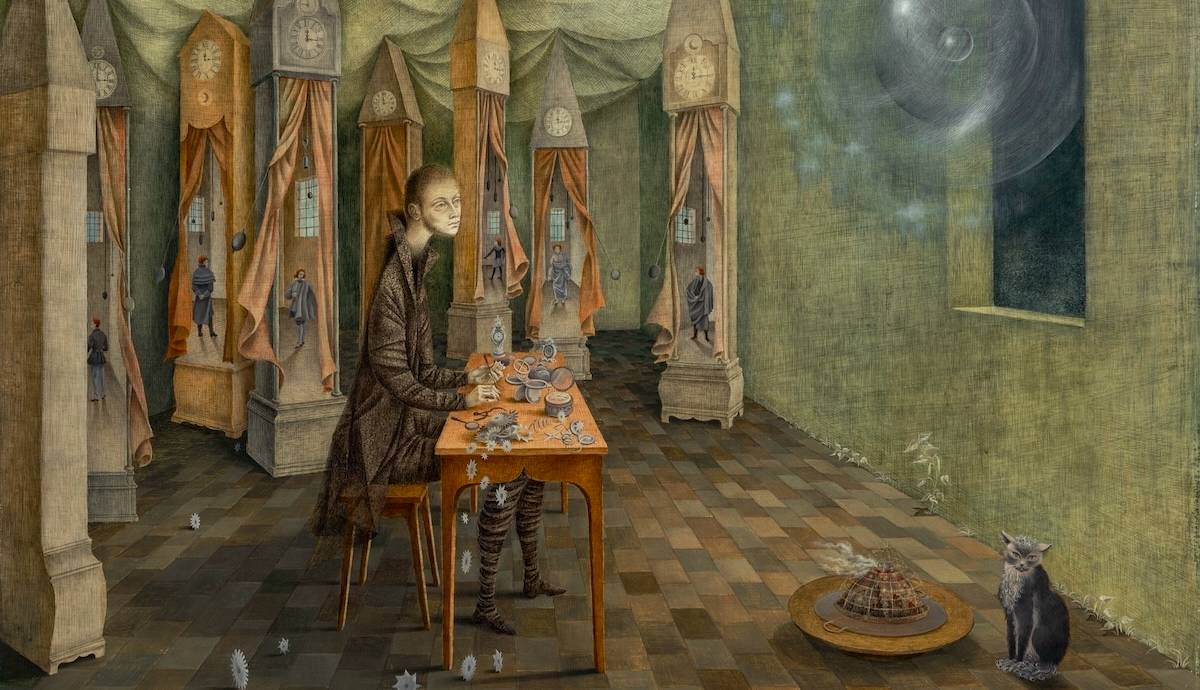
The acclaimed French artist JR presents a new illusionistic installation in Milan, Italy. Open to the public from April 10 to May 1, 2024, La Nascita invites visitors to explore the connection between the storied past and bustling present of Milan Central Station in Piazza Duca d’Aosta.
JR’s First Sculptural Installation

JR is a street artist whose colossal photographic collages have appeared across the globe, from the Louvre Museum to the U.S.-Mexico border. He began his career as a graffiti artist in Paris, where he first glued copies of photographs onto outdoor walls as a teenager. Today, JR’s distinctive black-and-white murals and installations are known worldwide for their effective combination of public art and activism.
JR’s latest installation is La Nascita, Italian for “the birth.” Commissioned for Milan Design Week 2024, this public art piece is JR’s first sculptural installation. Instead of using his signature artistic medium of paper and glue, JR printed photographic images of rock formations directly onto large aluminum panels. The sprawling installation ushers viewers into luxury fashion house Moncler’s exhibition An Invitation to Dream, which is on view inside the railway station for Milan Design Week.
An Illusory Tunnel of Rocks

The aluminum panels comprising JR’s La Nascita were painted white, and the photographic images of rock formations were printed onto them in black using a sublimation process. After a coat of varnish, the sculptural pieces were ready to be installed on site at the train station. La Nascita hangs on scaffolding at the facade of Milan Central Station as well as on a series of smaller scaffolding structures placed across the surrounding Piazza Duca d’Aosta. The use of aluminum rather than paper facilitates striking verticality and interactive three-dimensionality.
An opening at the center of La Nascita creates the optical illusion of a deep cavern, inviting viewers to enter into and experience the installation—and its historic surroundings—from multiple perspectives. Thematically, passing through a cavern opening echoes the experience of passing through a train station while traveling. It is a familiar process that symbolizes new horizons and transformation.
How La Nascita Connects Past and Present

JR designed La Nascita to recall the unique backstory and architecture of Milan Central Station, a monumental building that turned the city into an important Italian transportation hub. The photographic images of towering alpine rocks represent over a century of physical and cultural transformation.
The original Milan Central Station was built in 1864. By the start of the 20th century, however, the city had already outgrown it. In 1906, the Simplon Tunnel opened after a laborious mountain excavation, connecting Switzerland and Italy by railway through the Alps and dramatically increasing traffic in the region. At this time, King Victor Emmanuel III of Italy ceremonially laid the first cornerstone for an improved central train station in Milan.
Construction was delayed by an economic downturn during World War I and a series of increasingly complex redesigns. The towering new Milan Central Station was finally completed in 1931, featuring an unusual combination of architectural styles and sculptural elements. It was officially inaugurated by Prime Minister Benito Mussolini as a monument to Fascism. Today, Milan Central Station is Europe’s largest railway station by volume.










